8. The Toxic Avenger (Michael Herz & Lloyd Kaufman, 1984)

Ah… Troma Entertainment. What would have been of the B-movie industry without Lloyd Kaufman’s creation? We probably wouldn’t have many flimsy and hard-watching films, but that would stop us from enjoying too many gems. One of them, and perhaps the most symbolic of this studio, is “The Toxic Avenger”.
Remember Superman and Spider-Man? The superheroes whose alter-egos are nerdy and unpopular? Well, the Toxic Avenger from the movie is just the same as them… well, without a red-and-blueish appearance (actually, it is quite grotesque) and their noble commitment to justice. Actually, his origins are quite the same… more or less.
This superhero version of Troma is Melvin Ferd, a 98-pound weakling janitor from a gym in Tromaville, New Jersey (no, don’t bother to look it up on Google Maps). As a result of a prank carried out by his bullies, the local brainless customers, he gets in contact with toxic waste, which transforms him in the super(anti)hero from the title. Eventually, he will start a crusade against local crime.
Overall, what Kaufman created was one of the most famous cult films of all time and one of the mainstays of his studio. This recognition made “The Toxic Avenger” the first installment of a saga that even originated a cartoon series and a musical (seriously!).
Beyond this film, Kaufman formed the best known B-movie factory of all time that gave many films to the genre. Moreover, his “creature” features the first films of many famous actors and directors. Samuel L. Jackson, Billy Bob Thornton, Kevin Costner, Oliver Stone, and James Gunn (the director of “Guardians of the Galaxy”) are among the talents that crossed their paths with Kaufman. That’s why one of his films deserves to be on this list.
7. I Spit on Your Grave (Meir Zarchi, 1978)
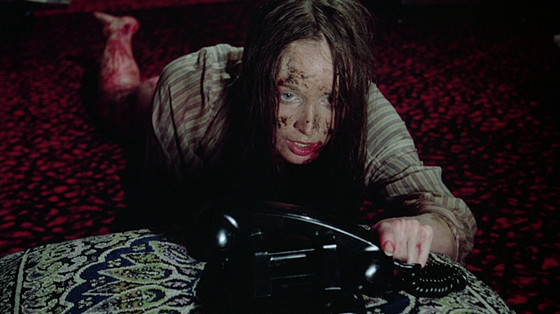
Most exploitation movies exploit different aspects of women. A significant number of grindhouse movies focus on female eroticism and on violence directed toward innocent women, mostly by sadistic men. However, there are few movies that leave the chauvinistic aggression without punishment. “I Spit on Your Grave” does not belong to those movies.
Jennifer Hills (brilliantly portrayed by Camille Keaton) is a Manhattan short story writer who rents an isolated cottage in rural Connecticut to write her next story. However, she is violently raped and attacked by five local yokels. What comes next is one of the most savage revenges in movie history, as well as one of the most powerful feminist allegations of all time.
This film represents at best the revenge subgenre, one that has been portrayed both in grindhouse movies and in mainstream movies (one of the most famous examples is Charles Bronson’s “Death Wish” series). Moreover, the movie is directed in a very slow pace with many long shots, many of them containing meaningful and symbolic elements.
“I Spit on Your Grave” is one of the movies that reflects how to properly carry out a revenge: relentlessly, violently, and mercilessly. Though graphic (you will not be able to get through the whole rape sequence), it is one of the best revenge movies ever made.
6. The Last House on the Left (Wes Craven, 1972)
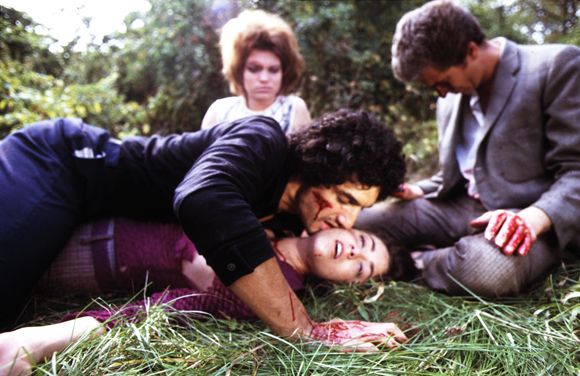
You’ve probably heard of this movie. This 1972 film is from mastermind Wes Craven, the director behind “Nightmare on Elm Street” and “Scream”, and one of the most influential directors of the horror genre. Many of the features you like from current horror movies stem from his films, and his legacy is obligatorily followed by horror directors.
However, “The Last House on the Left” is not a horror film as we know it; here the monsters are psychopathic humans and the victims are two innocent teenage girls, instead of the dumb annoying hot cheerleader and the moronic douchebag quarterback who are tormented by a monster.
The influence of this movie lies in the way Craven narrates the two parts of the film. We are told the story of Mari Collingwood, the daughter of two doctors, who sets out to celebrate her 17th birthday with Phyllis, her more rebellious new friend. However, they make the mistake of running into the sociopathic Krug and his wacky new friends.
From this moment on, we have the grim “privilege” of witnessing the torture and death of these two girls, something that causes us to look away from the screen. This first part perfectly illustrates the grasping virtue of exploitation, and it is the best example of the torture the female protagonists of the “Women in Prison” subgenre go through.
Nevertheless, torture is as well featured in the second part, although in a very different way. The torturers and murderers take shelter from a storm in a house – the house of the Collingwoods. The two worried parents (their sweetheart did not arrive in time) ignore at first the true nature of their hosts. They finally realize and discover the corpse of their darling, and as a result, Craven gives us another more torture.
The parents, seeing the futility of the police (a criticism Craven shows in most of his movies), take the justice into their own hands in the same gory way the torturers did with their child. This part is as gruesome or even more gory than the first, but it will be more pleasant to watch and will prove highly significant for many revenge movies (“I Spit on Your Grave”, “Thriller: A Cruel Picture”, “Death Wish”).
This shocking movie is different and important for many reasons. It is one of the first movies from one of the best-known horror directors, and it features elements that will be replicated in different movies. Moreover, we get to empathize with the characters, it raises criticisms, and leaves in the viewer a disturbing feeling of awe. It’s a true masterpiece.
5. Plan 9 from Outer Space (Ed Wood, 1959)
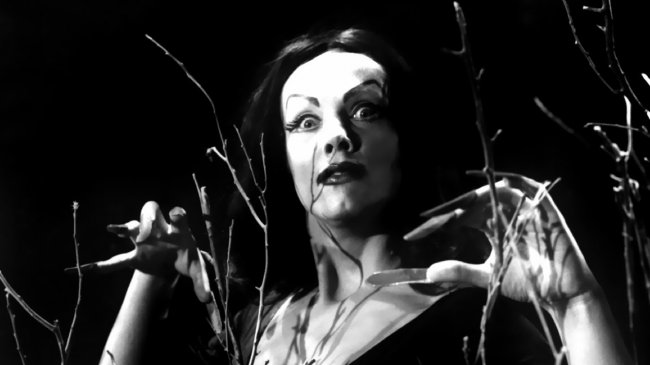
B-movies are old as cinema itself, but we owe to the next movie and its director what we define as a B-movie. Of course, we are talking about Ed Wood, the so-called “worst director of all time” and his most famous movie, “Plan 9 from Outer Space”.
“Plan 9 from Outer Space” tells the story of the resurrection of the death, named “ghouls”, by an extraterrestrial race. This scheme, called “Plan 9”, is carried out with the purpose of dissuading the humans from creating a weapon that could destroy the entire universe (It seems the worst director of all time could be critical as well, in his own way).
Ed Wood was the first director who created his own industry far from the major studios. He was one of the most representative personas of the B-movie industry and directed nearly 50 low-budget films, including comedies, science fiction, and horror movies in the 1950s (many featuring the former silent horror star Bela Lugosi). In addition, he shot sexploitation films through the 1960s and 1970s, all of them with his representative campy style.
His style left a long-lasting legacy in the cheap movie industry, especially that of the 1950’s low-budget sci-fi and horror. Both imitated and referenced not only by many B-movie directors but also from commercial filmmakers (you may have heard about the director from his 1994 biopic “Ed Wood”), Ed Wood and his movies deserve a spot in the history of B-movie filmmaking, as well as on our list.
4. The Blair Witch Project (Daniel Myrick & Eduardo Sánchez, 1999)
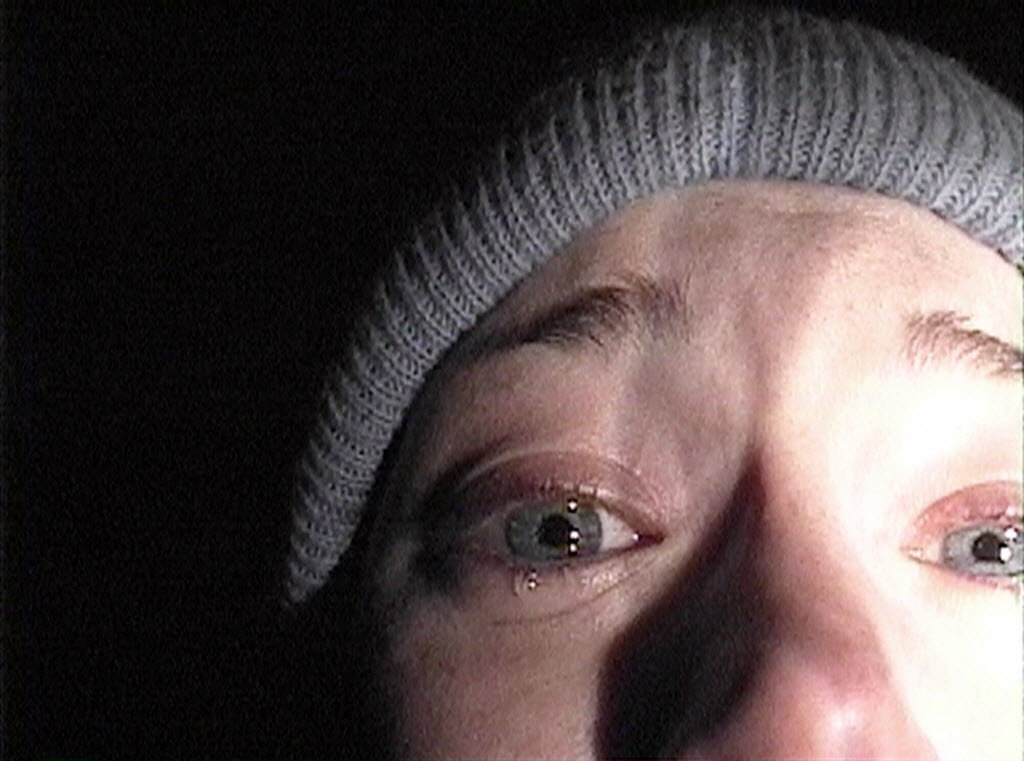
Though it is not necessarily difficult for a B-movie to become popular, it is highly unlikely for it to become a high grossing movie and achieve massive popularity. However, sometimes there are exceptions and one of them could be both successful and prominent. That is what happened with “The Blair Witch Project”; It proved to be a very influential movie for the current horror trend, and moreover, it grossed $249 million against a $60K budget.
As previously commented with “Sharknado”, nowadays, the only way for a movie of this kind to be successful is to rely on the Internet, and “The Blair Witch Project” was the first movie that did so. It exploited its themes and plot during the first years of Internet as a popular phenomenon, and as a result, it became one of the most relevant horror movies of all time.
The plot is similar to that of “Cannibal Holocaust”, where the footage of three missing students is found. It shows the trek of the three students in the woods near Burkittsville, Maryland. They intend to research the legend of a child-kidnapping witch that terrorized the village during its colonization, called the “Blair Witch”. Of course, the three of them get lost and we witness their desperation and their ultimate deaths (Heather Donahue’s final monologue has become a popular sequence).
Much like its plot, “The Blair Witch Project” recycled many aspects from “Cannibal Holocaust”: it was directed by newcomers, the characters adopted the real names of their inexperienced actors, and it was publicized as a true story suffered by the actors. However, their most important aspect is the “hand footage” technique.
Though it was not the first movie to use it, this was the first horror movie that saw its potential as a way to highlight the anxiety and the suffering that the main characters suffer, and to highlight the thrilling atmosphere.
This innovative characteristic was something that truly contributed to its success, and as a result, many modern horror movies feature this mannerism (“REC”, “Paranormal Activity”, “Insidious”, “Cloverfield”). It seems that the audience likes to be part of these frightening situations, and for that, they must thank “The Blair Witch Project”.
3. Dawn of the Dead (George A. Romero, 1978)
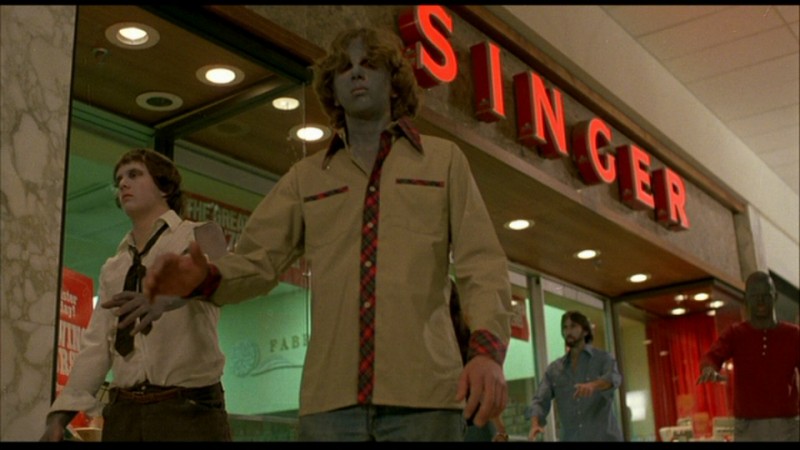
Though it may not be the first film featuring zombies (there is the famous I Walked with a Zombie by Jacques Tourneur from the Val Lewton factory), “Dawn of the Dead” is without a doubt one of the most famous movies of its genre; every flick we see about zombies has this movie under its skin. Though even Romero had already made “Night of the Living Dead”, where the undead were first portrayed as cannibalistic eaters, “Dawn of the Dead” is the first film that addresses them as “zombies”.
A spiritual sequel from “Night of the Living Dead”, Romero reshapes the elements he introduced in his 1968 movie; it presented us a “hide and defend” situation on a small scale where two siblings go visit their dead mother at a cemetery.
When the zombies wake up for no apparent reason, they must hide along with other unlucky people in a house, and finally the zombie siege ends. “Dawn of the Dead” goes beyond this; the whole country is under zombie attack and the only way to defend oneself is to run and hide.
SWAT agents Roger DiMarco and Peter Washington fly in helicopters alongside TV reporters Francine Parker and Stephen Andrews to a deserted shopping mall. After the typical discussion of “what to do now”, they decide to stay in the mall and defend it and their lives from the flesh-eaters. Apart from the “shotgun in the face” moments, Romero introduces a critical question.
The living make the deserted mall their home and they get used to living in isolation among the amenities the center presents. They get used to that static kind of life and they have fun with the goods in the different shops; thus we question if the characters are still worried about protecting their lives or if they just defend their new consumeristic home and way of life. This dilemma makes a cheap horror film into a critical slow-paced film denouncing capitalism.
Finally, it is not the zombies who break into the mall, but humans – a motorcycle gang led by Blades (Tom Savini). As a result, the living defend their new adopted home in a ferocious and vicious way; we are shown that the isolation they’ve went through in a place filled with goods have altered their behavior. When the battle ends, the survivors are not the same as they were before.
It is not foolish to state that “Dawn of the Dead” is one of the most influential B-movies of all time. It influenced many movies, sagas, and series (of course, Rick Grimes knows what we are talking about), but it is a film that stands on its own as a critic movie, something quite admirable for a cheap film. Who, then, are the zombies, the living or the dead?
2. The Texas Chainsaw Massacre (Tobe Hooper, 1974)

I bet you know this movie as well, and if you don’t, you will recognize in it several features from modern horror movies. This movie has everything you could ask from a horror movie: innocent yet naïve characters, a series of unfortunate events that lead the characters to their demises, twisted minds behind all the pain, gory deaths, a good-handed sense of suspense, and a memorable “monster” who is in fact a tormented soul named Leatherface.
The story can be summarized in a few short words. A group of friends is driving through Texas and after they stop at a gas station, they divert into a creepy old house where they find their deaths. It sounds familiar, doesn’t it? Well, this movie got all these ideas first and showed them through a very solid and suspenseful direction.
To say that this movie is influential just minimizes its impact: it IS the quintessential horror movie, the movie that created a genre (the stranded group of friends that are hunted one by one), and inspired many directors over the years.
Ridley Scott was inspired by it while making “Alien”, Alexandre Aja and Rob Zombie took many ideas from this film in their movies, and furthermore, it laid the foundations for other sagas like “Halloween”, “The Evil Dead”, and “The Blair Witch Project”, and was the first instalment of its own saga. “The Texas Chainsaw Massacre” is a B-movie that inspired many commercial and well-known movies; as a result, it can be said to be one of the most influential B-movies of all time.
1. Mad Max (George Miller, 1979)
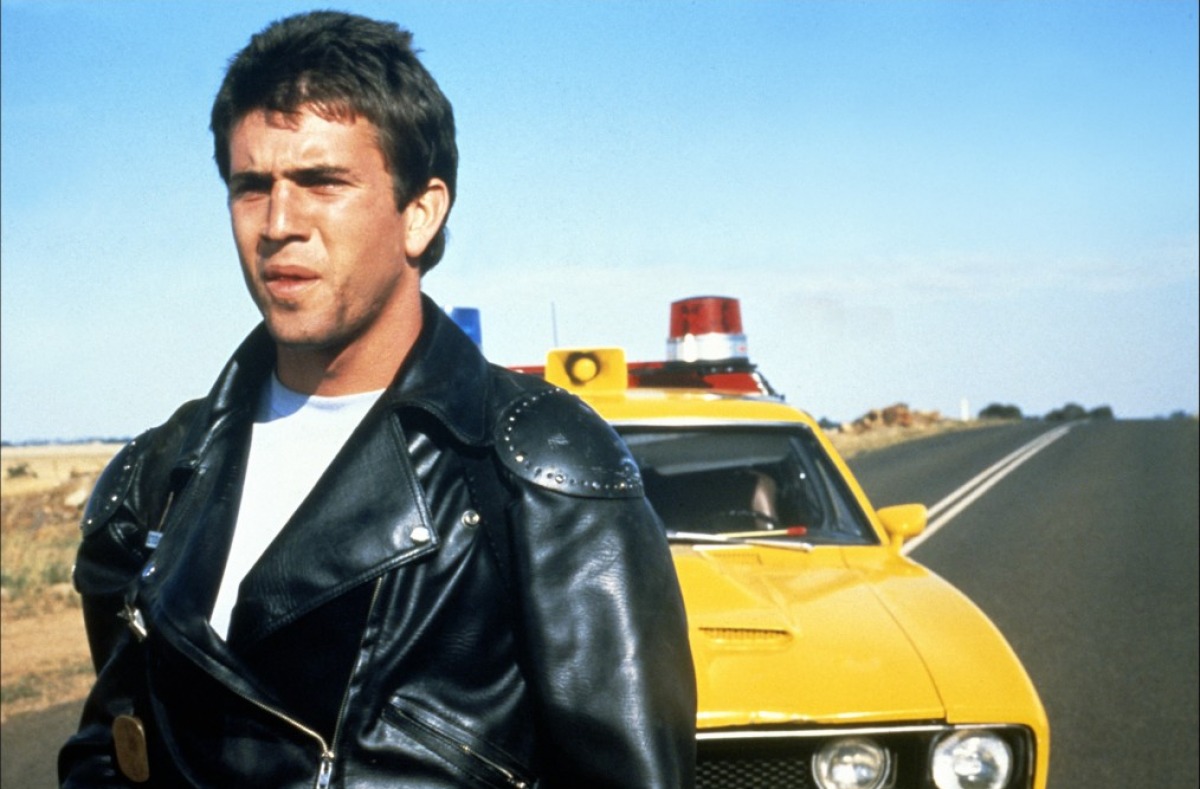
Yep, I know what you’re thinking. How can the first installment of one of cinema’s most famous and successful box office action sagas be on this list, and moreover, at the top? Well, dig it: “Mad Max” is indeed a B-movie and one of the most important of all time, according to its influence.
It has every aspect of a true B-movie: it was made with a very narrow budget (between $350K- $400K) and far from the main cinema industry; it featured unknown actors, some of them with experience in previous B-movies (there’s an inexperienced guy named Mel Gibson in this film); it was directed by a newcomer, George Miller; and its themes were cars, crashes, violence, and vengeance.
We all know the plot: in a dystopic future (we learn that the story takes place in a post-apocalyptic world in the second film), frenzied patrolman “Mad” Max Rockatansky is unable to hold the psychotic motor gang lead by “Toecutter” as they kill both his best friend and his family. This will lead to one of the most frenetic climaxes of action cinema: Max going “Mad” as he avenges his peers.
The best example of the “Ozploitation”, the exploitation made in Australia, “Mad Max” has transcended history. In contrast with other B-movies, “Mad Max” features many aspects too good to be amateur: solid interpretations, a unique apocalyptic atmosphere created by superb costumes and production design, splendid editing, and a balanced direction by a newcomer. We owe to this movie many of the features we see in today’s action movies, especially those featuring car sequences.
As for 1979, no one had shot car chases in this risky and spectacular way, and no movie had presented a rich and special setting as this movie did. Now, every time we think about apocalyptic images, we see the dusty roads from the Outback filled with deranged motorcycle-loving punks, and whenever we see a car crash in film, we see Mel Gibson inside the wrecked car. That’s why this B-movie is one of the most influential of all time.
George Miller is the father of one of the most acclaimed sagas of all time, and was even nominated for an Oscar in 2016 (what more do we have to say about “Mad Max: Fury Road”?). He created, with a modest but incredibly ambitious B-movie, one of the most enduring cinematic legacies of all time.